Wednesday, 6 April 2011
When republican nationalists went over to Satan...
http://www.youtube.com/watch?v=ch5u8YbOyIE
I disdain to show his filth on my Blog. Readers will have to follow the link to watch the snake at play.
But be in no doubt. This republican "leader" hereby openly admits to sanctioning cold-blooded, brutal murder.
And now he sits in a constitutional parliament pretending to make law for the rest of us.
With such capitulation to evil, Western democracy seems to be sowing the seeds of its own destruction.
With these views he is well on course to spend eternity with his mentor, the Prince of Darkness.
Sunday, 2 March 2008
The Wind That Shakes the Barley: a sorry tale.
 The Wind That Shakes The Barley is, I think, a very good film.
The Wind That Shakes The Barley is, I think, a very good film.Readers of Roman Christendom may find this a surprising comment.
I saw it recently for the first time.
The reason I think it good is because I think it is probably highly accurate historically - an unusual thing for many a modern film (although, be warned, there is an unnecessary amount of unpleasant bad language).
I put off seeing it because I thought it would just be Fenian propaganda, especially as the producer is, apparently, an Irish Communist.
However, the real horror of the war comes out in the film in all its brutality and terror.
It ought to be enough to persuade anyone that both sides in the war were utterly reprehensible and a disgrace to humanity.
The IRA are shown to be a mixture of Marxian Socialists and non-Marxist Nationalists which is exactly what they largely were.
The Black and Tans are shown as a pack of brutal scoundrels and portrayed exactly as I suspect they were - brutalised thugs with no sense of morality or decency, every bit as blameworthy as their IRA antagonists.
Both sides in that tragic war readily betray common morality, commit murders and kill the innocent with no regard, seemingly, for common humanity or their own souls.
Hero/anti-hero Damien O'Donovan asks "I hope the Ireland we are fighting for is worth it" as he murders Anglo-Irish landlord, Sir John Hamilton, and, even more horribly, his own childhood friend, Chris Riley, an innocent simpleton caught up in a drama beyond his control.
Damien quite rightly finds his conscience troubled, especially when the boy's mother - entirely rightly - says "Take me to my child" and then later says to Damien: "I never want to see your face again".
For what sort of Ireland were they committing these grotesque sins, crying to Heaven for vengeance? For an Ireland that ended up being ruled by the usual parcel of corrupt politicians who are now busily abandoning their Faith as fast as they can. In other words, all that horrible bloodshed and murder was not even worth it, even if it had not already been horribly sinful.
This is the grave evil of revolution: it is willing to sin and sin horribly, to murder brutally and send any number of innocents to the next world for purely worldly gains which turn out to be no lasting gains at all since they are purely worldly.
Next, of course, the Revolution devours its own. Soon an end must come to the senseless and brutal murders. Both sides agree to sit at table and cut a deal. The deal is never quite what either side wants but then that is the nature of a deal, isn't it? And the extremists will not agree to the deal and so start a war against the dealers. So it happened.
Indeed, in Ireland it was even worse: the deal was brokered by accredited representatives of Dail Eireann and the Dail approved it by a majority. But still the Republican extremists would not accept it.
The Free Staters knew that they had only to wait for an opportune moment and they could declare independence. And they were right. The Free Staters won the Civil War. Then, sure enough, independence eventually came without any help from Sinn Fein/IRA bombs.
As always happens, the bombers and assassins were of no use whatsoever. The constitutional way was the only right way but the revolutionaries wanted to be in charge and no amount of innocent bloodshed would stop them. The Sinn Fein/IRA murderers weren't going to be happy with any deal but their own, were they? Thus the cold-hearted, bloody murders of innocents like Chris Riley were continued.
Worst of all, these sinners are now regarded by many Irish Republicans as heroes. It is pathological. It is nothing less than re-crucifying Christ.
A telling moment is when the Catholic Parish Priest quite rightly pleads for peace, in a Sunday sermon, and excoriates the Free State military courts, on the one hand, and the IRA anti-Treatyites, pillaging and murdering, on the other hand. How right he is to do so!
Anti-hero Damien then stands up and makes a typically unjust outburst against the Catholic Church accusing it - and he lies horribly in so doing - of siding with the rich against the poor, a grotesque falsehood if ever there were one. How many schools, clinics, welfare agencies, and churches did Damien and his like ever build for the poor? Yet everyone knows that the Catholic Church is second to none in such provision. Nevertheless, Damien does not hesitate to frame his lie.
His own brother, Teddy, who had fought in the IRA with him and is now a Free State Officer, tries to reason with him and quite rightly tells him that if he will only wait then they will secure an independent Ireland by constitutional means in time. Damien won't wait. He's a hot-head who wants it all now, whatever the cost in human misery, blood and tragedy. His ideological hatred is remarkably well portrayed in the film.
He scorns his brother's sensible warnings and is determined to spill more innocent blood. But he is captured whilst attacking a Free State police station and taken to his brother for questioning. He is obdurate. He will tell nothing.
He is condemned to die as a terrorist and - terribly and tragically - his own brother, Teddy, commands the firing squad with tears in his eyes.
This is the true picture: the ultimate horror of revolution and rebellion. Brother kills brother, who, in turn, has killed an innocent child like Chris Riley.
Truly, it is a vision of Hell. It is blood-curdling and made all the more so by these same people claiming to be Catholics of a sort. It shows all too well how even the Devil can pretend to be a Catholic.
The whole war was a major tragedy for Ireland given the native charm and decency of most Irishmen and women.
Home Rule could have come to Ireland as far back as the 1860s or even earlier but for the bombers. Gladstone was ready to give it but the Fenian bombers assassinated policemen in Manchester and set back the cause of Home Rule for another 50 years.
Eventually, thanks to peaceful constitutionalists like John Redmond and John Dillon, the Home Rule Act was passed in 1914 but the First World War intervened. After the war the bombers took over and the blood-letting began.
Yes, this is a film that tells it like it was. And, sadly, it is not a pretty picture.
...
Tuesday, 11 December 2007
Well, that was a surprise, eh?
Not much response to my post on Ireland. Not surprising, I suppose. It will come as news to some.
Yes, it's true. Sinn Fein/IRA are not, repeat not, a Catholic organisation, nor even an organisation for Catholics.
But consider, now. Did you really ever think that a gang of terrorist murderers could be?
No?
Well, then.
And yet there are still many out there who put money in the tin when it is passed round. And in Boston, until recently, the collectors even said things like "put in ten dollars and kill a British soldier".
Whatever happened to turning the other cheek, to forgiveness, to brotherliness, to meekness, and above all to love? Yes, my friends, where is Holy Charity in all this?
It all became shrivelled up in hatred, violence and a thirst for vengeance. How horrifying that once Christian men should fall into such vileness and infamy.
Could anyone really think that this has anything to do with Catholicism or Christianity? No, of course not.
We ought openly to admit that it comes straight from the very belly of hellfire.

The real leader of the IRA
...
Saturday, 1 December 2007
The tale of Erin (part two), the men of blood take over
It is grievous to see Ireland having escaped one form of tyranny - that of the Protestant Ascendancy - so soon delivered into the hands of another, even more deadly tyranny - that of the Republican terrorists.
Modern Sinn Fein/IRA is an avowedly Marxian-socialist organisation that supports liberal abortion, divorce and radical Feminism. Bairbre de Brun, Sinn Fein Minister in NI, signed into law the statutory instrument that legalised the “morning after” abortion pill which southern Irishmen rejected in the abortion referendum.
Republican extremism would not be an issue in Ireland had it not been for the fact that they bombed their way to the negotiating table. That such violent extremists had never found favour with most Irish people is a matter of historical fact.
The 1916 rebels, after arrest, were taken through the streets of Dublin where they were loudly booed and cursed by the Dubliners as traitors and terrorists. They were roundly condemned by the people of Dublin and Ireland whose sons were fighting on the Western front in France.
 The streets of Dublin after the 1916 rebellion
The streets of Dublin after the 1916 rebellion
Even after they were judicially murdered by a so-called “liberal” PM (David Lloyd-George) there was still never a majority for separation from Britain and still less for a republic. At its height, Sinn Fein never got an absolute majority of votes in Ireland and its popularity quickly dissipated. Notoriously de Valera left them to found Fianna Fail because they were too extreme and violent even for him.
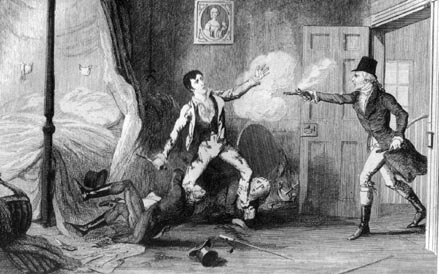
"Lord Edward and Wolfe Tone", the first United Irishmen, were both Protestants as were almost all the United Irishmen who started the rebellion of 1798 and began the modern Irish nationalist movement. The United Irishmen was originally an Ulster Protestant movement, not a Catholic one, but few nowadays know this.
The movement was inspired by the French Revolution, a revolution that slaughtered Catholics in vast numbers, banned religion, and proclaimed atheistic “rationalism” the new “religion” of the French State.
Many British and Irish Protestants were drawn to its false cry of liberty, equality and fraternity as well as its anti-Catholicism. These are the roots of the Irish republican nationalist campaign.
Later movements like Sinn Fein, the Fenians and the IRB were all avowedly secularist and revolutionary. They were all roundly and repeatedly condemned by the Catholic Church and their leaders excommunicated both by the Irish bishops and by Rome and, finally, in January 1870, by order of Blessed Pope Pius IX himself.
Bishop Moriarty of Kerry famously said “Hell is not hot enough nor long enough for the leaders of the Fenians”.
No-one who bothers to check the record can be in any doubt whatever: the Church roundly, consistently and very strongly condemned the Fenians, the IRB and the Republican separatists as men of violence and terror and as secret societies.
Throughout the 19th century, no-one but these condemned extremists sought separation from Britain, still less an Irish republic.
Constitutionalists like Dan O’Connell sought only repeal of the Act of Union which had abolished the Irish Parliament and “united” it with the Westminster Parliament. The “Repeal of the Union” movement meant this and not, as so many today stupidly think, complete withdrawal from the UK and the foundation of a republic.
The Act of Union dissolved the Irish Parliament in 1801 because, it being a Protestant Ascendancy parliament, so many men thought it oppressive and unrepresentative of the Catholic majority.
 "The Liberator": Daniel O'Connell, Catholic lawyer and bringer of liberty to the Catholics of Ireland and the British Empire
"The Liberator": Daniel O'Connell, Catholic lawyer and bringer of liberty to the Catholics of Ireland and the British Empire
Daniel O’Connell and the constitutionalists were highly successful in their peaceful campaigns and achieved Catholic emancipation for the entire British Empire. Thereafter, Irish Catholics slowly began to be elected to Westminster and, in due course, an Irish Parliamentary Party was formed which had as many as 80 members of Parliament and held the balance of power.
Dan O’Connell remained, his whole life, a monarchist and was an admirer of Queen Victoria. But he was also an Irish patriot and a skilful campaigner for the cause of Irish freedom.
The constitutionalists came very close to achieving the repeal of the Act of Union and Home Rule and succeeded in persuading the British Prime Minister, William Ewart Gladstone, of the rightness of their cause.
However, they were opposed and severely hampered by the hot-headed revolutionaries and advocates of violence in the “Young Ireland” movement which based itself upon the anti-Catholic “Young Italy” movement of Mazzini, Garibaldi and other Pope-haters who set up a republic in Rome and eventually annexed all the Papal States from the Pope and tried to capture, imprison and even kill him.
Fortunately the Pope escaped to Gaeta in 1847. He was not so fortunate in 1870 and was imprisoned by the later Italian revolutionaries.
The hot-headed revolutionaries in Ireland were equally violent.
Ironically, the British government (especially under Gladstone) supported the Italian revolutionaries upon whom Young Ireland based itself. Like the Americans, the British government, in those days, had a nasty habit of supporting revolutions in Catholic countires whilst viciously suppressing even legitimate dissent within its own realms.
This, however, only served to confuse the issue in Ireland and allowed the secularist revolutionaries to pose as defenders of the Irish Catholic people, all the while that they were actually deeply anti-Catholic. It was a most diabolical deception, well worthy of the Prince of Darkness and Father of Lies himself.
The republican hot-heads staged further abortive uprisings in Ireland which completely pulled the rug out from under the constitutionalists and stymied the prospect of Home Rule.
 The farcical attack on the police at widow McCormack's cabbage patch
The farcical attack on the police at widow McCormack's cabbage patch
Every murder or rebellion by the hot-heads lost the sympathy of the general public and set back the cause of Home Rule.
These ridiculous "revolutions" were largely farcical in their aims and execution, involved only small numbers of people, achieved nothing of any good and did a great deal of damage to the cause of Irish Home Rule.
The most ludicrous example was perhaps the "battle" of "Widow McCormack's cabbage patch" in which hot-heads bottled up a squad of police in the home of widow McCormack. After several abortive attempts by the revolutionaries to break in and capture the house, police re-inforcements arrived and arrested all the rebels.
More serious were the Phoenix Park murders.
This refers to the assassination in 1882 of the second and third persons in rank in the British Dublin Castle government of Ireland by the "Irish National Invincibles”, a secret society of republican extremists.
On 6 May 1882, the most senior Irish civil servant, the Permanent Under-Secretary, Thomas Henry Burke and the newly appointed Chief Secretary for Ireland, Lord Frederick Cavendish – who was also the nephew of Prime Minister William Gladstone – were stabbed as they walked though Phoenix Park in Dublin en route to the Viceregal Lodge, the vacation residence of the Lord Lieutenant of Ireland. Cavendish had only arrived in Ireland the very day he was murdered.
Charles Stuart Parnell (another Irish Protestant nationalist but with a penchant for other men’s wives) who had founded the Irish Parliamentary Party (IPP) sought to distance himself and his PArty from the murder.
Parnell was a very extraordinary and unusual man who came from the Church of Ireland (Anglican) gentry but later, it is said, secretly took the IRB (Fenian) oath. While, it is said, nevertheless preferring the Tories to the Liberals he was, at the same time, highly regarded by the Liberal Prime Minister, Gladstone who thought him one of the most extraordinary men he had ever met.
 Charles Parnell MP, the "uncrowned King of Ireland", a nationalist from the Anglican gentry who joined the Fenian IRB, some say, and yet preferred the Tories to the Liberals whilst being a friend of Liberal PM Gladstone, was a curious mixture of contraries
Charles Parnell MP, the "uncrowned King of Ireland", a nationalist from the Anglican gentry who joined the Fenian IRB, some say, and yet preferred the Tories to the Liberals whilst being a friend of Liberal PM Gladstone, was a curious mixture of contrariesHowever, Parnell's policy of allying his party to Gladstone's Liberal Party to enable Home Rule was also ultimately defeated by the murders. Gladstone's Minister Lord Hartington was the elder brother of Lord Frederick Cavendish. Saddened and infuriated by the manner of his brother's early death, Hartington split with Gladstone on Home Rule in 1886 and 1893 and led the breakaway Liberal Unionist Association which allied itself to Lord Salisbury's Conservative governments. This delayed Home Rule by 28 years, until the Third Irish Home Rule Bill which was passed technically in 1914, but which was never effected.
All the assassins were eventually captured, and five were hanged.
Eventually, after the fall of Parnell becuase of his divorce and marriage to his mistress, Kitty O'Shea, the constitutionalists began to make the running and under John Redmond and John Dillon, both Catholics and IPP MPs, the cause of Home Rule advanced rapidly by purely constitutional means. It was eventually achieved by the Home Rule Bill of 1914 but unfortunately the World War intervened.
The war was used by the new generation of violent revolutionaries as a cover for revolution (just as the Russian Bolshevik revolutionaries had done).
Some of the 1916 rebels had begun as monarchists (Plunkett wanted Josef von Hohenzollern, a German Catholic duke, to be king of Ireland) and some, like Connelly, were Marxian-Socialists. All soon agreed to be republican separatists.
The judicial murder of the rebels by the British Liberal government, and the bloody deeds of the "Black and Tans" and Auxiliaries, converted too many Irishmen into reluctant support for the revolutionaries.
The hot-heads had won and the hard-working, long-suffering constitutionalists lost, and many of them had died, or lost sons, fighting in the Great War, a fact which has been totally and shamefully forgotten by successive Irish governments, so that these brave men now have no memorial. They unquestionably died for Ireland, as much as any, believing, as did Redmond, that the Home Rule Act would be honoured after the War was over.
 John Redmond MP, leader of the Irish Parliamentry Party in the House of Commons - a peace-loving constitutionalist who obtained Home Rule for Ireland in 1914
John Redmond MP, leader of the Irish Parliamentry Party in the House of Commons - a peace-loving constitutionalist who obtained Home Rule for Ireland in 1914
Few know that there were more Catholic Irishmen from the South fighting in the British Army in BOTH world wars than ever there were Orangemen from the North. And anyone could join the Irish Divisions but to join the Ulster Division, disgracefully, one had to sign the anti-Catholic Solemn League and Covenant.
After the war, Michael Collins began his campaign to de-stabilise Ireland and he did this by organising the murder, almost exclusively, of “Castle Catholics” - those who had some connection with the British administration. His evil “Squad” did not hesitate to shoot men coming out of Mass, and even in the confessional on one memorable occasion, save that the pistol jammed and so no-one was hurt.
His campaign worked all too well. The British government panicked and sent in the Tans. In many cases, houses left standing by the Tans were burned down by the IRA and vice-versa.
 Michael Collins, Sinn Fein rebel and terrorist who organised the "Squad" to assassinate Catholics who did not support terrorism. Later the Free State leader, he was himself assassinated by his former comrades in terror, with the connivance of Eamonn de Valera
Michael Collins, Sinn Fein rebel and terrorist who organised the "Squad" to assassinate Catholics who did not support terrorism. Later the Free State leader, he was himself assassinated by his former comrades in terror, with the connivance of Eamonn de Valera
Collins then agreed to the Treaty forming an Irish Free State but Eamonn de Valera rejected it and boycotted the clandestine Dail (Irish Parliament). The Free State was declared and then another war broke out between pro- and anti- Treaty supporters, a bloody civil war. Many more Irishmen were killed in the civil war than in the war with the British.
At Partition (the main bone of contention in the Treaty) the Royal Irish Constabulary (RIC) was broken up and many RIC men headed for Ulster knowing that they could expect little mercy from the IRA after partition.
80% of the RIC had been Catholic, not Protestant.
After the Treaty men won (but with Collins dead, thanks to de Valera’s connivance some say) Sinn Fein/IRA began a campaign to de-stabilise the new Free State government. The Free State government cracked down on the IRA but the IRA responded by assassinating Kevin O’Higgins, the Justice Minister.
Over 100 IRA men were executed by the new Free State government for acts of terrorism against the government and 10,000 were interned - far more than ever the Brits interned or would even have thought of interning. This is another little known fact.
The IRA responded by reverting to a bombing campaign on the mainland of Britain and they succeeded in assassinating the British Chief of the Imperial General Staff, Field Marshal Sir Henry Wilson, in his own home.
 Eoin O'Duffy, Sinn Fein rebel and later leader of the Fascist Blue Shirts
Eoin O'Duffy, Sinn Fein rebel and later leader of the Fascist Blue Shirts
Former Sinn Feiner and IRA rebel, Eoin O’Duffy founded the new Free State police, the Garda Siochana and then helped to found Fine Gael. He later went off to Spain with the Irish Fascist “Blueshirts” to fight for General Franco.
De Valera abandoned Sinn Fein realising their extremism was a liability and founded Fianna Fail. He came to power with that new party and seized the opportunity presented by the abdication crisis in 1936 to remove all references to the monarchy save in external affairs. He did not dare put the matter to a referendum because he knew he would not win it.
 Eamonn de Valera, rebel and terrorist assassin, about to be put safely under lock and key
Eamonn de Valera, rebel and terrorist assassin, about to be put safely under lock and key
De Valera never actually declared the Republic.
It was Costello, the Fine Gael Teaosaich, who did that, in 1948. He did it unilaterally and without consultation (still less any referendum). The immediate cause was his pique at the undiplomatic and rather offensive comments made by some Canadian Empire loyalists when Costello was visiting Canada.
The IRA did not stop its campaign of violence, however, and attacks were made upon British bases in the North even during the 1950s. Sean South was one such hot-head and he succeeded only in getting himself killed.
The troubles broke out again in the late 1960s when the more bone-headed of Orangemen stepped up their on-going low-level persecution of the Catholic minority. The British Army were called in not to harass the Catholic minority but rather to protect them from the Orange extremists.
The IRA seized upon this with glee to re-start a whole campaign of violence, dishonestly pretending that the British Army had been called in purely to assist the Orangemen to persecute Catholics.
And we know the rest.
But not many people know how many innocent Irishmen, Catholic and Protestant, have been killed by Sinn Fein/IRA, now a para-Marxist organisation.
IRA bombs have claimed the lives of innocent children, many of them Catholic. Who can forget the innocent old lady standing at the bus stop in London when the IRA's Chelsea barracks nail bomb went off and a 6″ nail was lodged in her heart? Or the aftermath of the Enniskillen bomb?
 Aftermath of the Enniskillen bomb
Aftermath of the Enniskillen bomb
Sinn Fein/IRA also took to racketeering on a grand scale in the North and South and not long ago were responsible for a £23.5 million pound bank robbery.
And it is known that Gerry Adams and Martin McGuinness have long been members of the IRA Army Council and have both, especially McGuinness, been personally responsible for murders.
Not nice people to do business with.
But neither are the Orange para-militaries.
These people are, however, only a tiny minority. Unfortunately, they are powerful because they have guns and bombs.
So it is essential that all the guns and bombs get taken away.
To be fair to David Trimble of the Ulster Unionist Party, he was the first politician willing to shift and try to reach a peaceful settlement. So were SDLP leaders like John Hume and Seamus Mallon. But Blair so mishandled the whole business that divisions widened again and the DUP and Sinn Fein got more, not less, votes.
Let us hope that the new "sweetheart" deal between the DUP and terrorist-supporting Sinn Fein will last. There remain, however, even more extreme groups like the INLA, the Continuity IRA and their equivalent among the Orange extremists. They can still do great damage.
 Stormont: the Northern Irish parliament
Stormont: the Northern Irish parliament
It does not help that the Tony Blair/Bertie Ahern axis were more keen on getting the EU agenda advanced than they were on establishing peace and justice in Ireland. But we should be under no delusion. Sinn Fein/IRA are not a party or group worthy of the support of any sane Irishman or woman and certainly not any Catholic Irishman or woman.
But truth, alas, has long been a casualty in the wars that have beset Erin's beautiful isle. In the American Hibernian diaspora, especially in places like Boston, fantasy and falsehood have long taken the place of truth when it comes to their understanding of Irish history.
But - as someone once asked - why let the truth get in the way of a good story?
The answer is simply this: if you need to be persuaded that the truth is important then consider, too, the many innocent people, including children, who suffer and have suffered terrible harm because too many people who ought to know better can't be bothered to find out the real truth.
...
Erin's green Isle - the true story

Ireland is one of the most beautiful countries in the world. It is an island green and unspoilt and home to the Irish race for centuries. In the West, wild and haunting, a brilliant light often casts its ancient spell over hills and dales of wild heather, brush and peat turf. It is breathtaking and spectacular.
In this land a remarkably talented, poetic, romantic and often most delightfully charming and religious people have, for centuries, lived: the Irish. Of this people the oldest races amongst them are Celtic of which the largest by far are the Gaels, the latest Celtic race in time to arrive on Ireland's shores. They are thought to have originated in the Middle East, possibly Scythia or even Galatia.
The Gaels speak and write a very unusual and mystical language called Gaelic, as do their close cousins the Scottish Gaels of the Highlands and Islands of Scotland. In Roman times Ireland was variously called Hibernia or Scotia and the Scotti or Scots were originally from Ireland before some of them travelled across to the Mull of Kintrye and later gave their name to what is now Scotland.
Never conquered by the Romans the Irish Gaels nevertheless imbibed the Roman culture and, above all, the true religion of which Rome became the great guardian and mistress. This they were taught by a Roman Briton, one Patrick, the son of a Deacon of the ancient British race, the Cymri, but himself Romanised.
St Patrick was taken captive to Ireland but later found his way back to Britain. He then later returned with a mission – a mission to convert the heathen Gael and make of them a land of saints and scholars to witness to the Gospel and and a people who, far on the outer reaches of the known world, the very edge of Christendom, would come to demonstrate to the rest of Christendom a loyalty to Roman Christendom and to the See of St Peter that lasted.
 King-Emperor Brian Boru, Ard Ri Eireann
King-Emperor Brian Boru, Ard Ri Eireann
Divided into 5 kingdoms - Ulster, Leinster, Munster, Meath and Connaught - the land of Erin came to be ruled by one High King, the Ard Ri Eireann, who regarded himself as an emperor, modelled upon the Emperor Charlemagne, ruling over kings. After the death of Brian Boru, the Empire of Erin fell into some disarray and corruption in both Church and State.
Eventually, the Pope – an English pope, Nicholas Breakspeare, Pope Adrian IV - in a Bull entitled Laudabiliter, issued after an invitation from various of the Irish Chiefs, particularly the King of Leinster, gave approval to King Henry II of England to invade Ireland.
King Henry sent Richard Fitzgilbert de Clare, Earl of Pembroke and later Lord of Leinster, nicknamed "Strongbow", to invade Ireland on behalf of himself and the Pope and to restore order.
In 1168 Dermot MacMorrough (Diarmuid mac Murchada), King of Leinster, driven out of his kingdom by Turlough O'Connor (Tairrdelbach mac Ruaidri Ua Conchobair), High King of Ireland with the help of Tiernan O'Rourke (Tigernán Ua Ruairc), came to solicit help from Henry II.
He was pointed in the direction of Strongbow and other Welsh Marcher barons and knights by King Henry. King Dermot secured the services of Richard, promising him the hand of his daughter Aoife (Eve) and the succession to Leinster. An army was assembled that included Welsh archers, which would lead to Richard's nickname, "Strongbow" (though it was first recorded in 1223, in a charter for Tintern Abbey).
The army, under Raymond le Gros, took Wexford, Waterford and Dublin in 1169 and 1170, and Strongbow joined them in August 1170. The day after the capture of Waterford, Strongbow married MacMorrough's daughter Aoife of Leinster.
 The wedding of Strongbow with Princess Aoife MacMurrough of Leinster
The wedding of Strongbow with Princess Aoife MacMurrough of LeinsterAfter various rebellions challenged Strongbow, he called upon the King of England for aid and Henry invaded in October 1172, staying six months and putting his own men into nearly all the important places. He was made Lord of Ireland by Pope Adrian IV.
The new Anglo-Welsh later became more Irish than the Irish and remained staunchly Catholic when the times changed and Protestantism came to threaten Ireland. They were often called the "Old English" despite being more accurately described as Cambro-Norman.

Though Ireland was a papal fief entrusted to the English king, as Lord of Ireland, it was the Protestant tyrant Henry VIII who usurped the title King of Ireland. He and his bastard daughter, Elizabeth I, persecuted the Irish and imposed a Protestant Ascendancy upon the country.
When Mary restored Catholicism, her husband, King Philip of Spain, was recognised by the Pope as King of England but also King of Ireland.
Thereafter, the early Stuarts maintained the Protestant Ascendancy but with the conversion of King James II to the Catholic faith, Catholicism was increasingly released from its bondage throughout the "Three Kingdoms" of England, Scotland and Ireland.
 King James II of England and Ireland and VII of Scotland
King James II of England and Ireland and VII of Scotland
But the so-called “Glorious Revolution” which rebelliously and treacherously overthrew King James, brought in one of the most brutally oppressive and cruel penal codes ever to oppress a Christian nation.
It was against this illegal and immoral code that the Irish, including the old Cambro-Normans (or "Old English"), gave lawful resistance. They loyally supported the Jacobite cause and supported the Catholic Stuarts at home and abroad producing such great men as Patrick Sarsfield, Earl of Lucan, and many another of the “Wild Geese” who went to serve in the armies of Catholic Europe, many reaching the highest ranks in Army and State in the Empire and the kingdoms of Christendom.
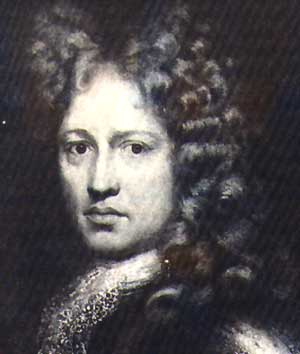
Patrick Sarsfield, Earl of Lucan, best known of the "Wild Geese"
But this all changed with the advent of the French Revolution and the gradual marginalisation of the Gaelic language in which Ireland’s true history had been written and preserved.
A new, unnatural, unholy and rebellious spirit entered into the otherwise tranquil and gentle culture of the Irish people.
Ironically, it was introduced by sons of the very Protestant Ascendancy that had been oppressing Irish Catholics for centuries. Not content with directly oppressing the Irish Catholic people, the Protestant and secular liberal Ascendancy now, through its rebellious sons, sought to poison the souls of the loyal Catholic people with devilish ideas of rebellion and revolution - not just against illegitimate usurpers but also against legitimate governments.
This was, in effect, to attack the very Catholicism of the Irish Catholic people in even more subtle and dangerous ways than the earlier direct, physical persecution of the savage Penal laws. Not a few Irishmen were duped into imbibing the spirit of revolution and so lost their faith - the very faith their ancestors had died for.
 A new, unnatural and unholy spirit of revolution invaded Irish culture from France
A new, unnatural and unholy spirit of revolution invaded Irish culture from France
It was a foreign, alien spirit – a spirit engendered by the so-called Enlightenment and specifically by the French Revolution – but brought to Ireland by Irish-born liberal Protestants, men like Theobald Wolfe Tone, Lord Edward Fitzgerald and Robert Emmet, all of them Protestants.
They formed the Society of United Irishmen with the express purpose of severing the connection with England and, ironically, many of these men were from Ulster in the North of Ireland. Many were Ulster Presbyterians - Orangemen - and the remainder were largely Anglicans or secularists.

Theobald Wolfe Tone, a Protestant-born, secular revolutionary who founded the Society of United Irishmen to foment revolution and who was later to cut his own throat in prison awaiting trial for treason (he is a hero of the Irish Communist Party)
Later, secularists and lapsed Catholics joined the movement as it became more and more revolutionary, secular and rebellious and deeply hostile to the Catholic Church which condemned it.
But how many today know these facts?
They know about the IRA and Sinn Fein. Some know about the Black and Tans and the Auxiliaries who ravaged Ireland after 1918. But they know little of what came before these terrorist groups.
The “Tans” were a bunch of thugs (and the Auxies worse) employed by the British Liberal government (led by Welshman David Lloyd-George) who misused them gravely.
 The "Tans" off to cause trouble, murder and mayhem at the behest of a British Liberal government
The "Tans" off to cause trouble, murder and mayhem at the behest of a British Liberal government
But… the IRA were founded not by Catholics but by secular revolutionaries who originally called the movement the Irish Revolutionary (later Republican) Brotherhood and the IRA (in all its manifestations: stickies, provos, etc) has killed at least as many Catholics in its bloody history as it has non-Catholics, and almost certainly many more.
 IRA terrorist about to cause mayhem, death and useless destruction
IRA terrorist about to cause mayhem, death and useless destruction
Neither the IRA nor Sinn Fein is now, nor ever has been, a real friend to Catholic Ireland or to Irish Catholics. The IRA even press young girls into doing their filthy "work"
The IRA even press young girls into doing their filthy "work"
Sinn Fein/IRA is a crypto-Marxist organisation dedicated to revolution by the spilling of innocent blood.
(To be continued)
...





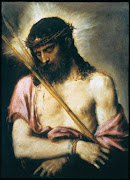



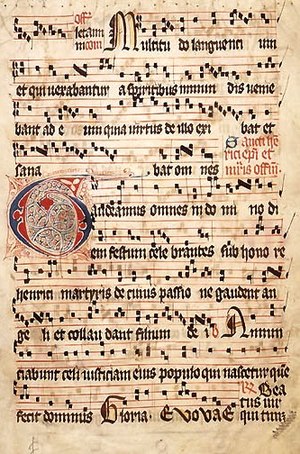

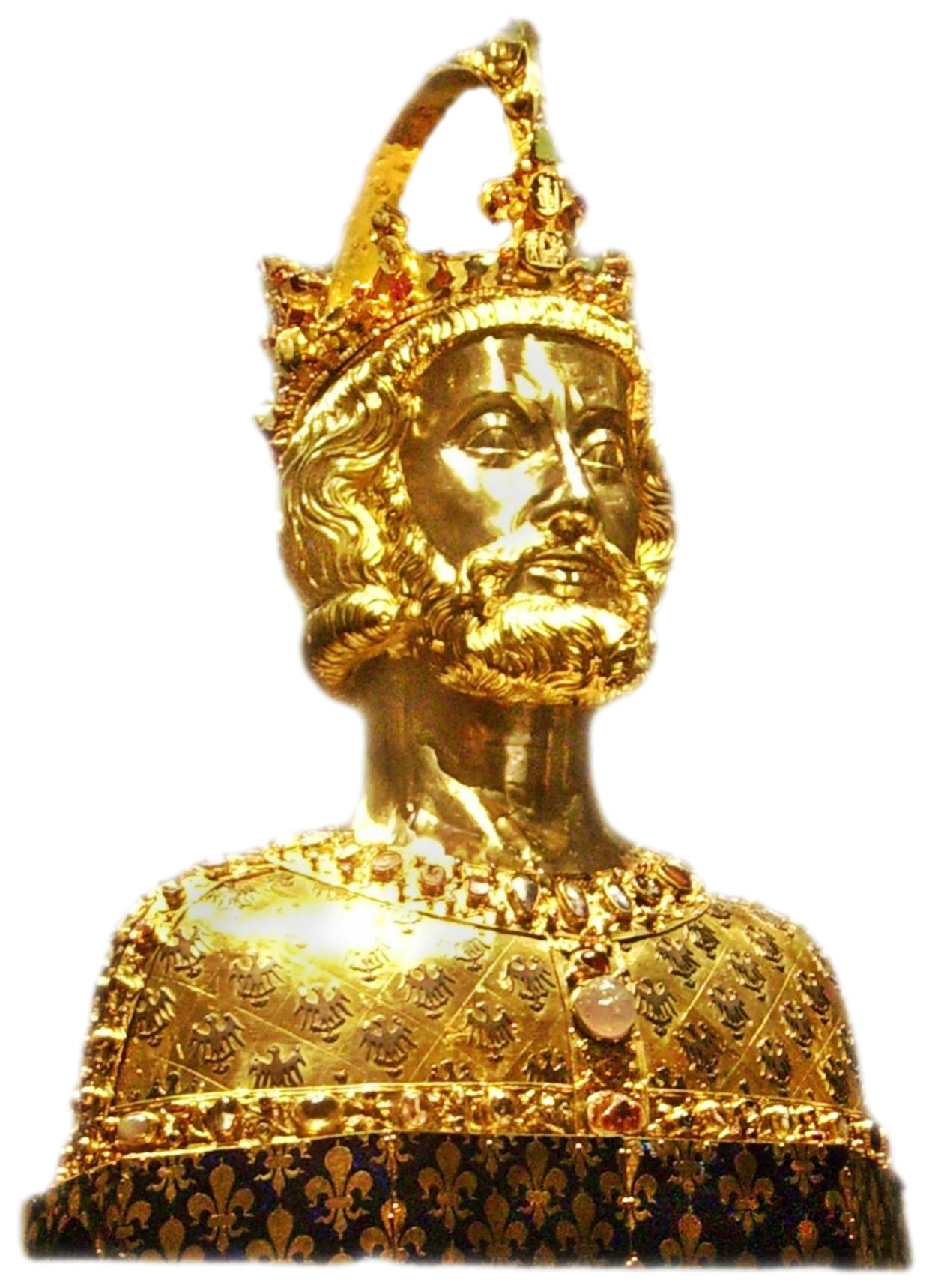



.jpg)





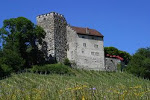


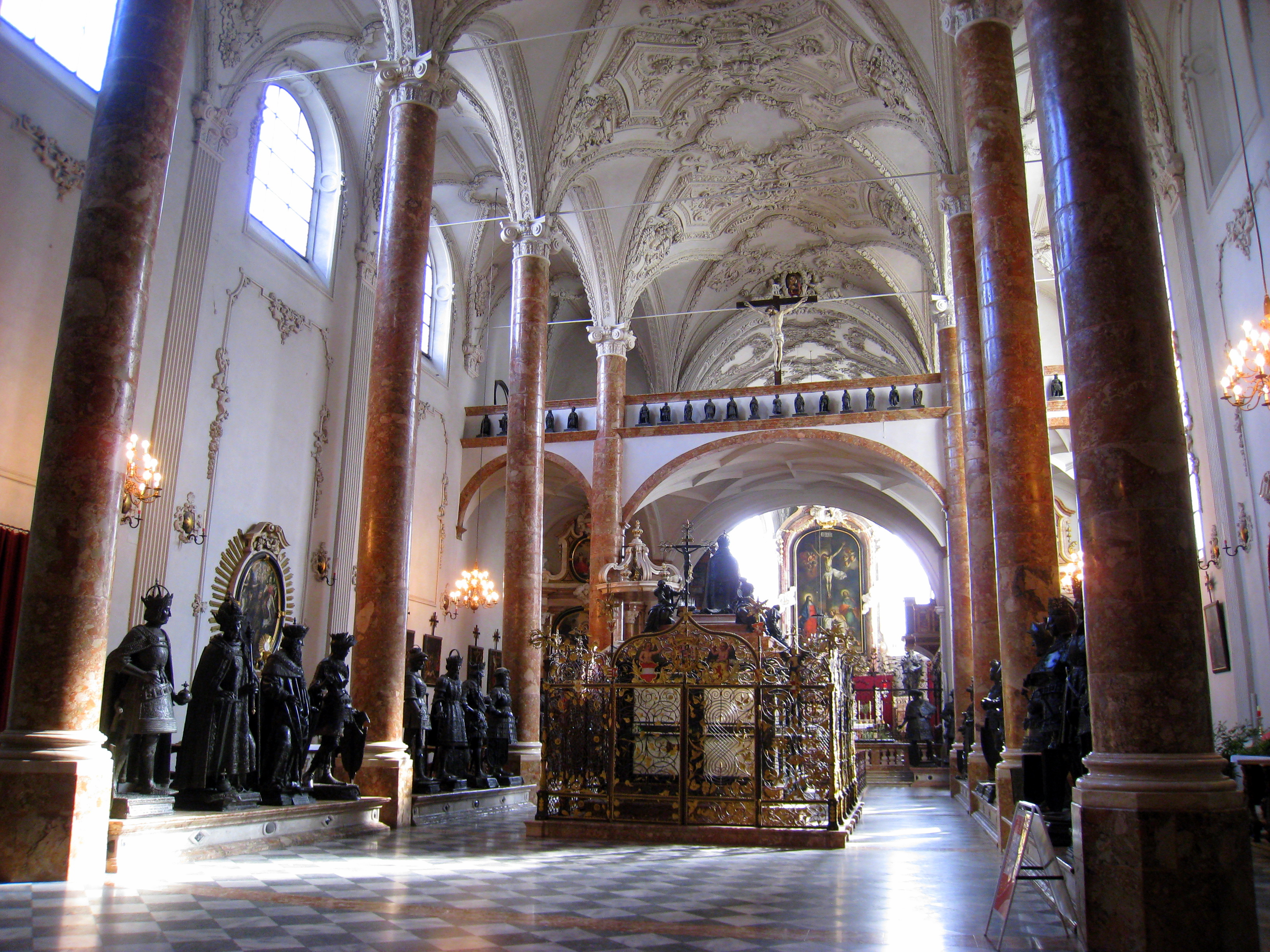


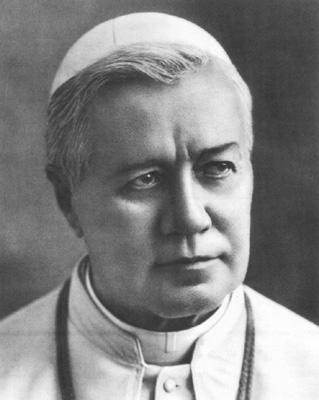










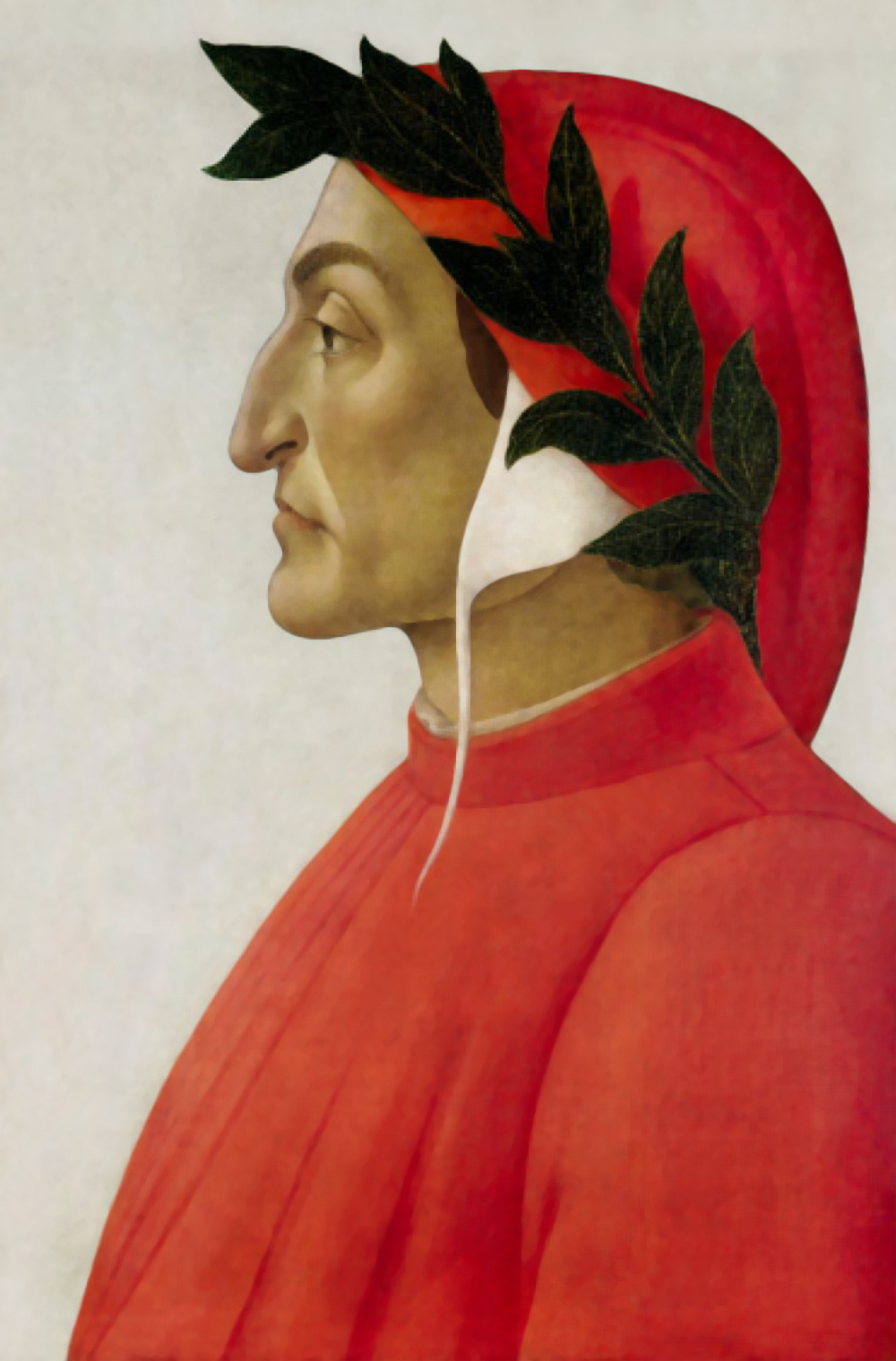



_-002.jpg/220px-Circle_of_Anton_Raphael_Mengs,_Henry_Benedict_Maria_Clement_Stuart,_Cardinal_York_(ca_1750)_-002.jpg)


